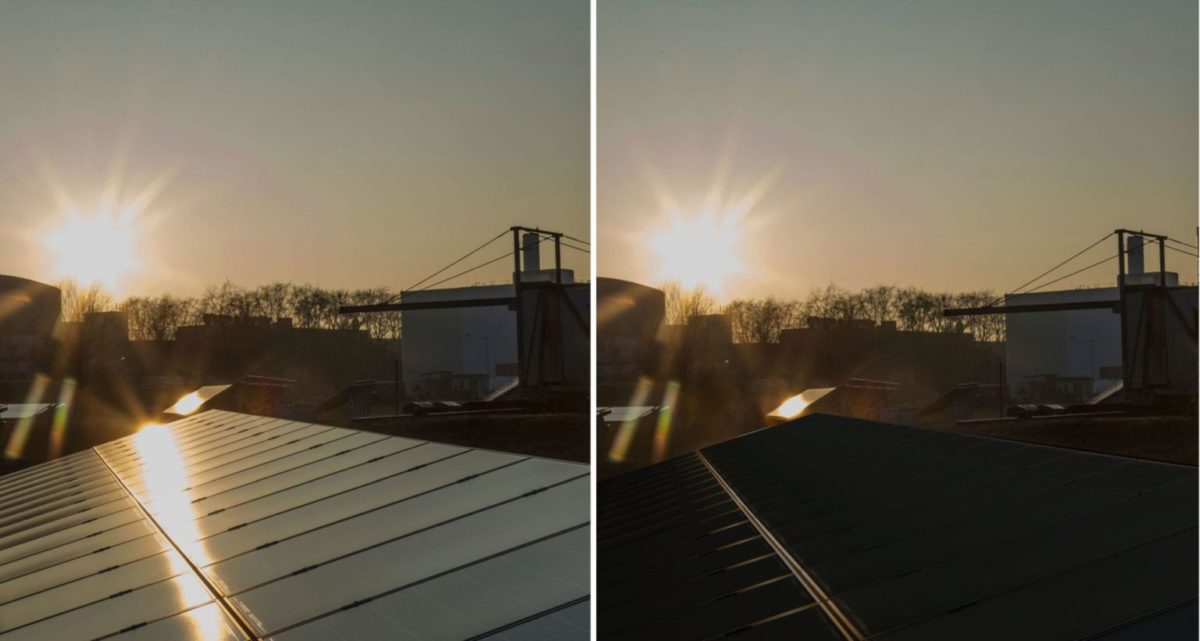From pv magazine International
Phytonics, a spin-off from the Karlsruhe Institute of Technology (KIT), has launched an anti-reflective film for solar modules after more than seven years of research and development work.
The start-up said it was inspired by the world of plants, more precisely from roses, in developing a film that it claims can improve the performance of a PV module by up to 10%.
The film was made by mimicking the nanostructures that can be found in the outer tissue of the rose petals’ epidermis, which are able to couple all incident light into the tissue and to let only the colored light emerge again. They were able to study this structure by using a scanning electron microscope.
The anti-reflective film was developed for various surfaces. “Our film makes it possible to combine the advantages of high-gloss and matt surfaces, namely to achieve intense colors without annoying reflections,” explains co-founder Ruben Hünig.
When it is applied to a solar cell, the film offers a broader absorption spectrum and a higher angle of light-incidence tolerance. Micro and nanostructures were fabricated to recreate the epidermis of the rose petals over a large area.
The film is claimed to suppress the reflection for all wavelengths and angles of incidence of light almost completely. This, according to the manufacturer, makes it far superior to conventional anti-reflective coatings.
The company specified that solar modules are only one possible application as the film can also be used for posters, display boards, traffic signs, pieces of furniture, packaging or facades. “The film gives surfaces of all kinds an anti-reflective coating and gives them a noble, velvety appearance,” it stated.
The anti-reflective film is mechanically flexible and is also suitable for curved surfaces. According to Phytonics, it is dirt-repellent and highly resistant to environmental influences such as UV light, moisture and temperature fluctuations. It is manufactured using an inexpensive roll-to-roll printing process and can be applied to all types of materials using standard lamination processes.
This content is protected by copyright and may not be reused. If you want to cooperate with us and would like to reuse some of our content, please contact: editors@pv-magazine.com.









By submitting this form you agree to pv magazine using your data for the purposes of publishing your comment.
Your personal data will only be disclosed or otherwise transmitted to third parties for the purposes of spam filtering or if this is necessary for technical maintenance of the website. Any other transfer to third parties will not take place unless this is justified on the basis of applicable data protection regulations or if pv magazine is legally obliged to do so.
You may revoke this consent at any time with effect for the future, in which case your personal data will be deleted immediately. Otherwise, your data will be deleted if pv magazine has processed your request or the purpose of data storage is fulfilled.
Further information on data privacy can be found in our Data Protection Policy.